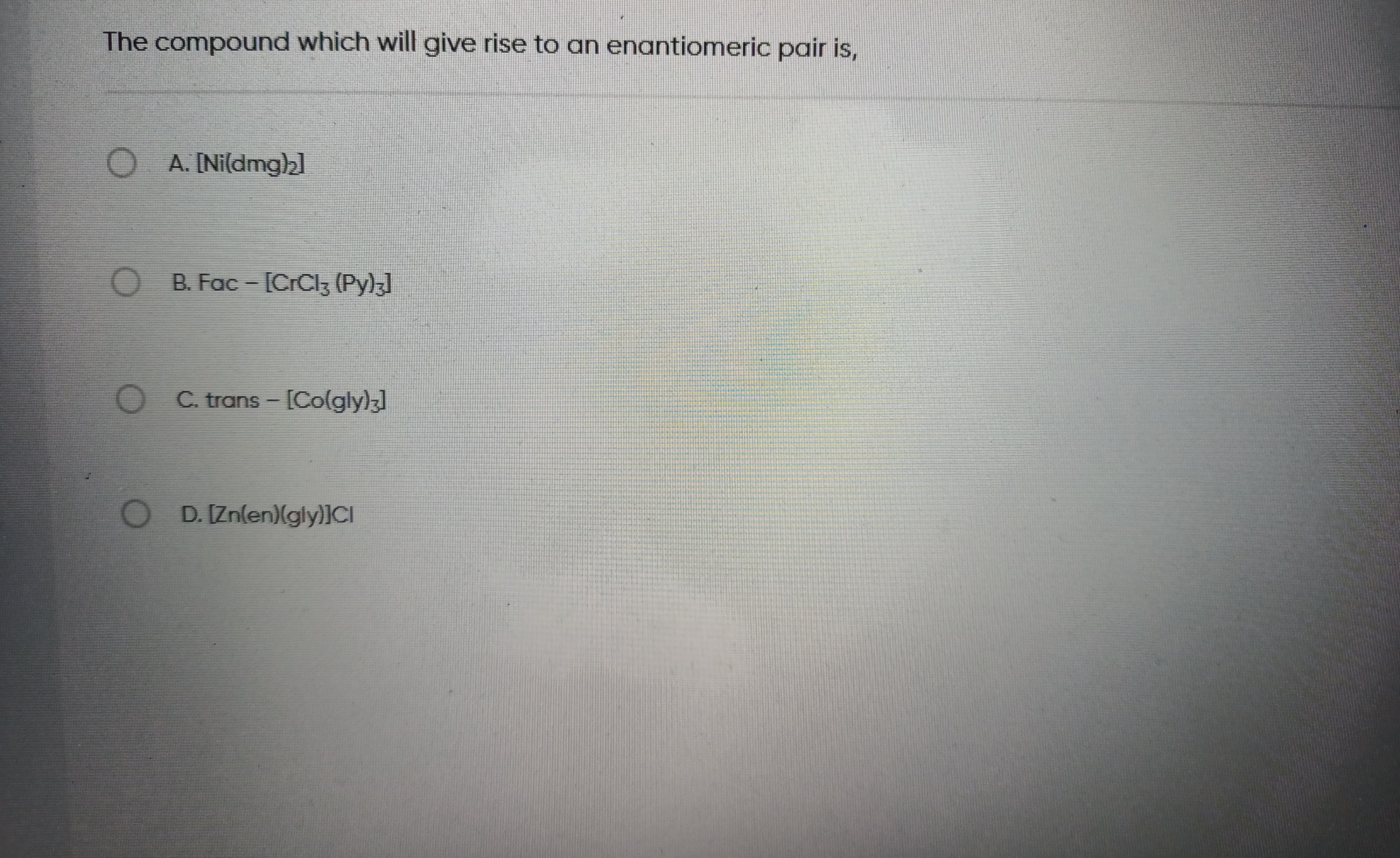Question
Question: The compound which will give rise to an enantiomeric pair is,...
The compound which will give rise to an enantiomeric pair is,

[Ni(dmg)₂]
Fac – [CrCl₃(Py)₃]
trans – [Co(gly)₃]
[Zn(en)(gly)]Cl
C, D
Solution
The compound that can give rise to an enantiomeric pair is one that is chiral or can exist as chiral isomers.
\textbf{A. [Ni(dmg)₂]} This is a square planar complex of Ni(II). Square planar complexes with symmetrical bidentate ligands are typically achiral due to planes of symmetry.
\textbf{B. Fac – [CrCl₃(Py)₃]} This is a facial isomer of an octahedral complex. The fac isomer of MA₃B₃ complexes has C3v symmetry, which includes mirror planes, making it achiral.
\textbf{C. trans – [Co(gly)₃]} Glycinate (gly⁻) is an unsymmetrical bidentate ligand. The complex [Co(gly)₃] can exist as facial (fac) and meridional (mer) isomers. The \textbf{fac isomer} is chiral and exists as an enantiomeric pair, while the mer isomer is achiral. Since the compound can exist in a chiral form, it can give rise to an enantiomeric pair.
\textbf{D. [Zn(en)(gly)]Cl} Zinc(II) typically forms tetrahedral complexes. In a tetrahedral geometry, the complex [Zn(en)(gly)], with two different bidentate ligands (ethylenediamine 'en' and glycinate 'gly'), is chiral. Therefore, it can exist as an enantiomeric pair.
